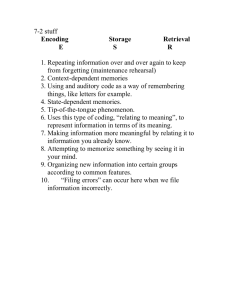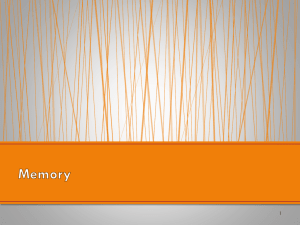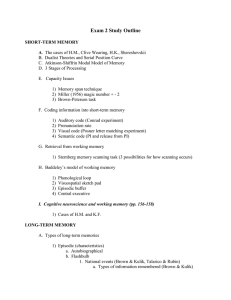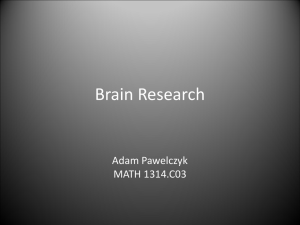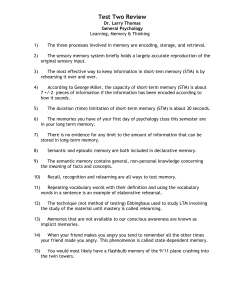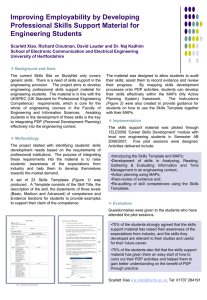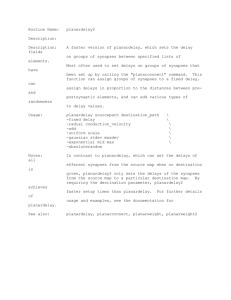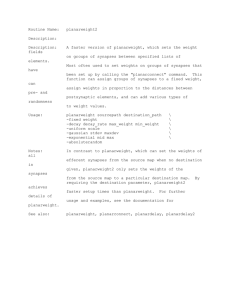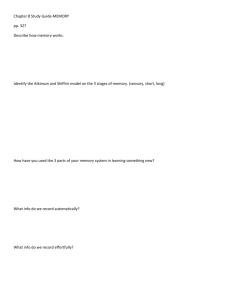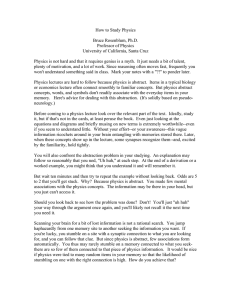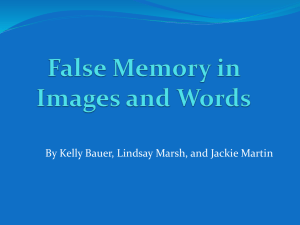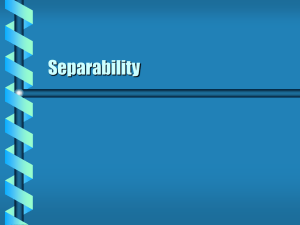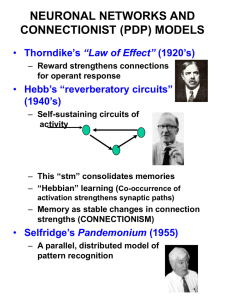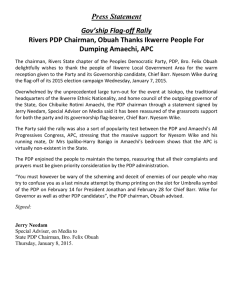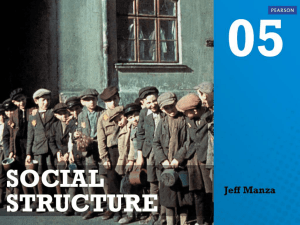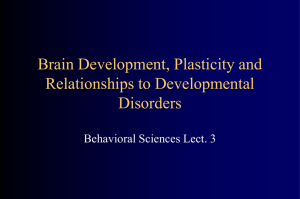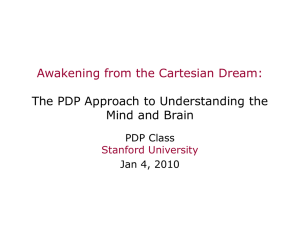Guided Notes – Memory – Storage
advertisement
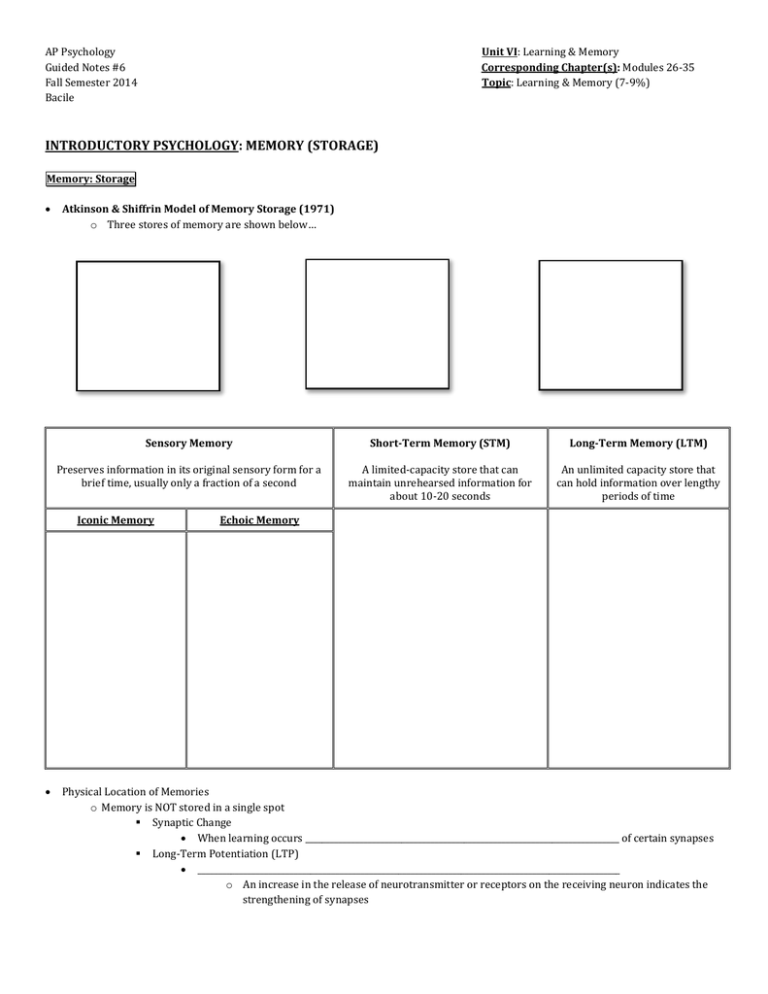
AP Psychology Guided Notes #6 Fall Semester 2014 Bacile Unit VI: Learning & Memory Corresponding Chapter(s): Modules 26-35 Topic: Learning & Memory (7-9%) INTRODUCTORY PSYCHOLOGY: MEMORY (STORAGE) Memory: Storage Atkinson & Shiffrin Model of Memory Storage (1971) o Three stores of memory are shown below… Sensory Memory Short-Term Memory (STM) Long-Term Memory (LTM) Preserves information in its original sensory form for a brief time, usually only a fraction of a second A limited-capacity store that can maintain unrehearsed information for about 10-20 seconds An unlimited capacity store that can hold information over lengthy periods of time Iconic Memory Echoic Memory Physical Location of Memories o Memory is NOT stored in a single spot Synaptic Change When learning occurs ___________________________________________________________________________ of certain synapses Long-Term Potentiation (LTP) _____________________________________________________________________________________________________ o An increase in the release of neurotransmitter or receptors on the receiving neuron indicates the strengthening of synapses TYPES OF MEMORY Implicit Memory o Without __________________________________________________________ o ____________________________________________________________________ o Actions, skills, conditioned responses & emotional responses Also known as ___________________________________________________________ Skill Memory o Riding a bike, typing, tying one’s shoes Automatic Reactions o Tensing up at the sound of a dentist’s drill Explicit Memory o Conscious recall o _____________________________________________________________________ o Recollection of words, definitions, names, dates, faces, events, concepts and ideas Two types of Explicit Memories Semantic Memory o _________________________________________________________________________________________________________________ Episodic Memory o Chronological, or temporarily dated, recollections of personal experiences REPRESENTATION & ORGANIZATION How is knowledge represented and organized in memory? o Conceptual hierarchies o Schemas o __________________________________________________ o Parallel Distributed Processing (PDP) Model Semantic Networks o Consists of ________________________________________________________________________________, joined together by pathways that link related concepts Less systematic than conceptual hierarchies and/or schemas Parallel Distributed Processing (PDP) Model o Assumes that cognitive processes depend on patterns of activation in highly interconnected computational networks that resemble neural networks Consists of large networks of interconnected nodes ______________________________________________________________________________ (excitatory/inhibitory effects) Asserts that ____________________________________________ correspond to particular patterns of activation in these networks
